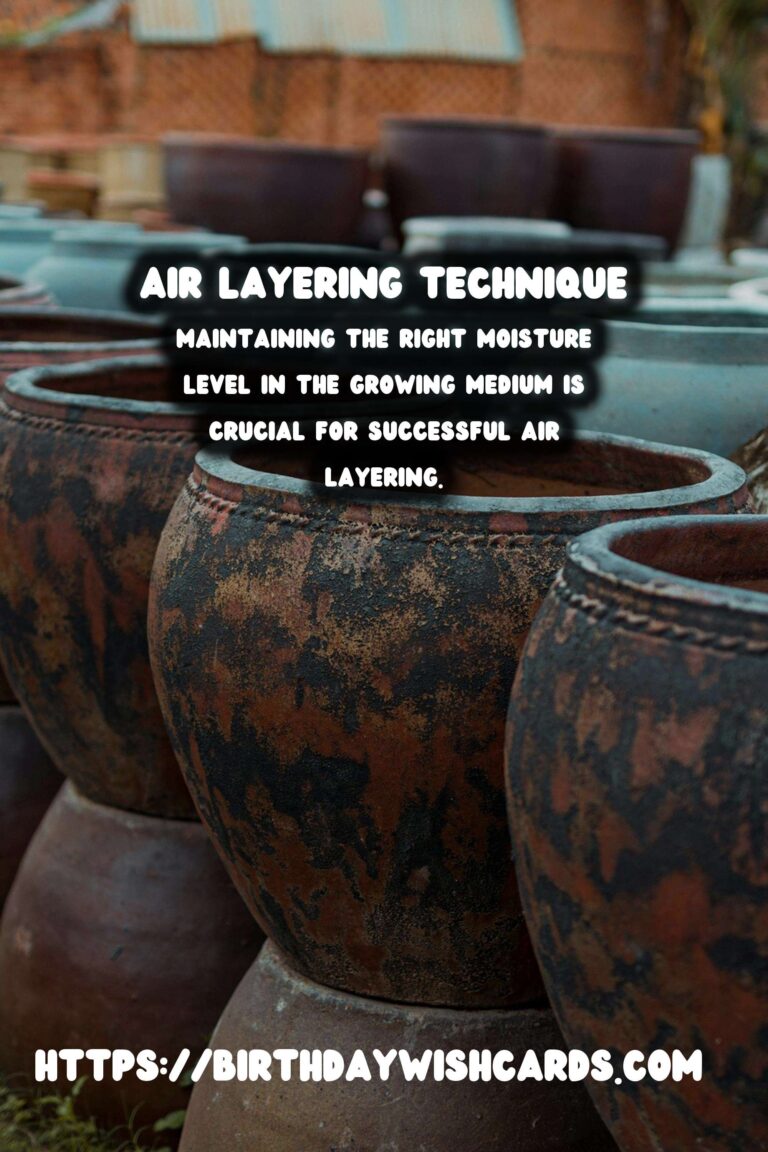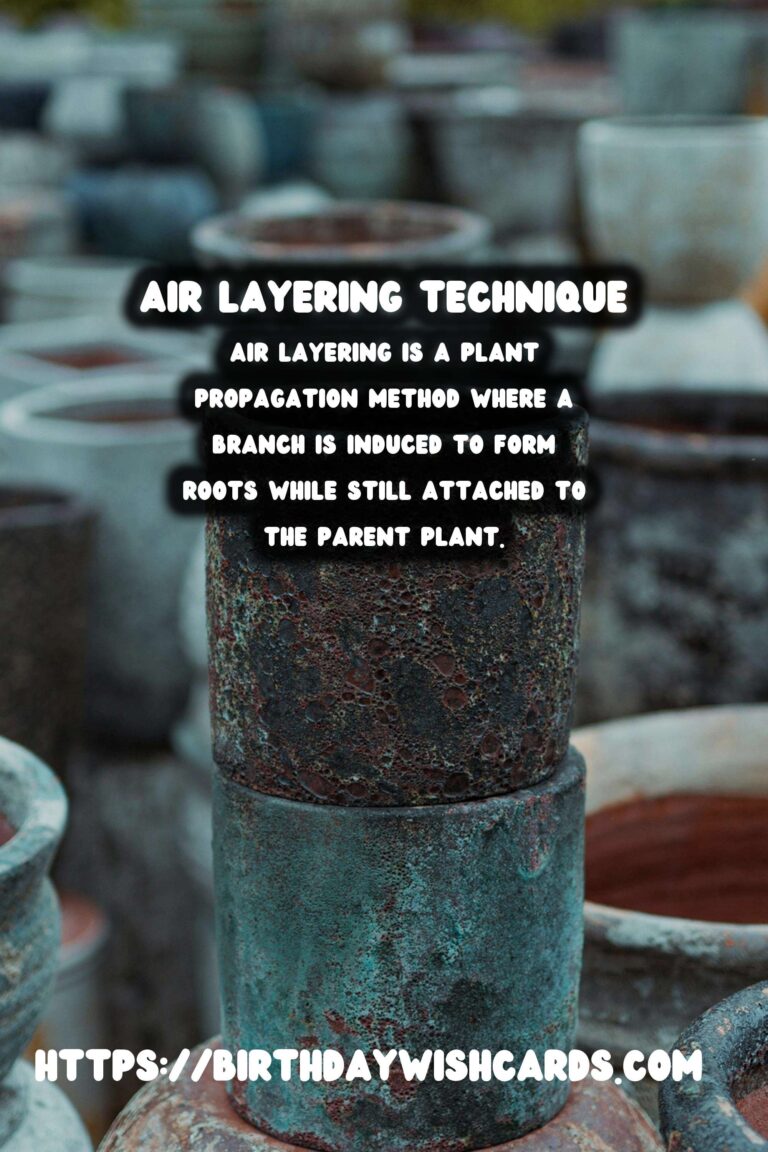
Air layering is a fascinating technique of plant propagation that allows gardeners to clone their favorite plants successfully. This method is widely used for plants that are difficult to propagate by cuttings or seeds. By understanding the process of air layering, you can expand your garden with healthy clones of your favorite plants.
What is Air Layering?
Air layering is a propagation method where a branch is induced to form roots while still attached to the parent plant. This process involves wounding a section of the plant’s stem, treating it with a rooting hormone, and wrapping it with moist growing medium and plastic to encourage root development.
Benefits of Air Layering
Air layering provides several benefits, especially for woody plants that are challenging to propagate through other methods. This technique allows the plant to continue receiving nutrients from the parent plant as the roots develop, increasing the chances of successful propagation. Additionally, air layering can produce larger plants more quickly compared to starting from seeds or cuttings.
Plants Suitable for Air Layering
Many plants can be propagated through air layering, but it is especially effective for woody shrubs and trees. Commonly air-layered plants include ficus, magnolia, camellia, and rubber trees. However, it’s essential to research specific requirements for each plant species before attempting air layering.
The Air Layering Process
The air layering process begins by selecting a healthy branch from the parent plant. The chosen branch should be at least the thickness of a pencil to ensure enough nutrients can flow through it. Create a wound by removing a ring of bark around the stem, approximately one to two inches wide. Apply a rooting hormone to the exposed area to encourage root growth.
Next, wrap the wounded area with a ball of moist sphagnum moss or another suitable growing medium. Secure the moss with plastic wrap, ensuring it remains moist throughout the root development phase. Check periodically to ensure the moss does not dry out, and re-moisten if necessary.
Root Development and Transplanting
Roots typically develop within a few months, although this can vary based on the plant species and environmental conditions. Once a sufficient root system has formed, the new plant can be cut from the parent and transplanted into soil. Care should be taken to acclimate the new plant to its environment gradually.
Challenges and Considerations
While air layering is an effective method, it requires patience and attention to detail. Maintaining the right moisture level in the growing medium is crucial for successful root development. Additionally, air layering is not suitable for all plant species, so understanding the specific needs of your plant is important.
Conclusion
Air layering is a valuable technique for gardeners looking to propagate difficult-to-grow plants. By mastering this method, you can clone your favorite trees and shrubs, expanding your garden with beautiful, healthy plants. With the right knowledge and care, air layering can be a rewarding way to enhance your gardening skills.
Air layering is a plant propagation method where a branch is induced to form roots while still attached to the parent plant. This technique is ideal for woody plants that are difficult to propagate through cuttings or seeds. The air layering process involves wounding a section of the plant’s stem and wrapping it with a moist growing medium. Plants like ficus, magnolia, and rubber trees are commonly propagated through air layering. Maintaining the right moisture level in the growing medium is crucial for successful air layering.
#PlantPropagation #AirLayering #GardeningTips

